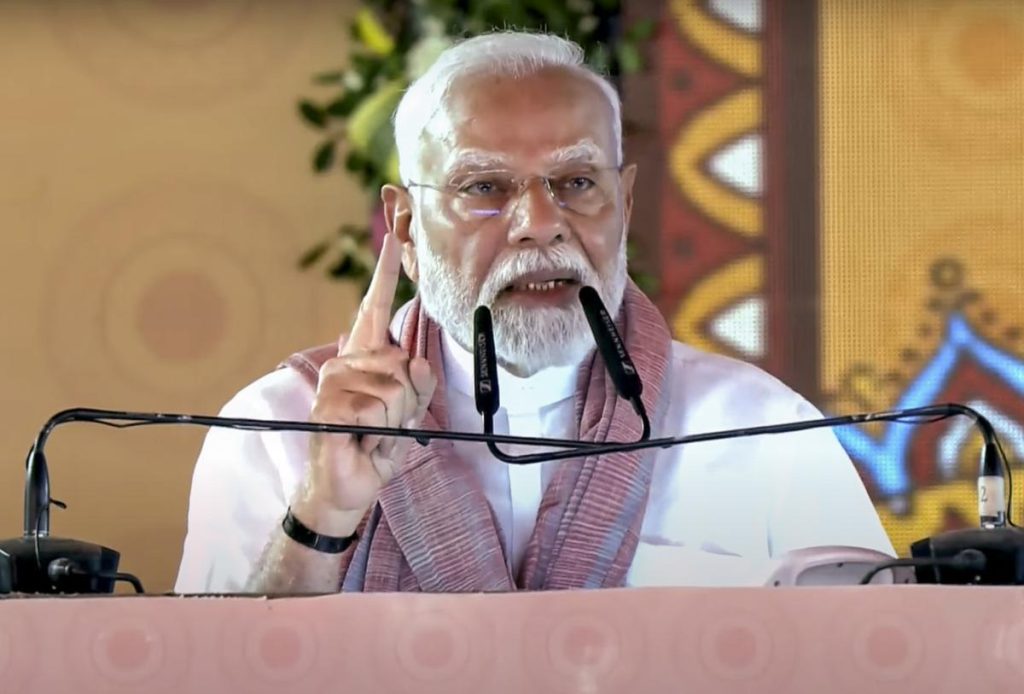New Delhi, June 9, 2025 — Marking exactly one year since Prime Minister Narendra Modi took the oath for his unprecedented third term on June 9, 2024, the Modi 3.0 government delivered a performance that analysts describe as “remarkable”—from hardline military operations to a roaring economy and sweeping legislative reforms. This deep-dive report assesses the top five highlights of a transformative year.
1. Operation Sindoor: Redefining India’s Counter‑Terror Strategy Modi 3.0
On May 7, 2025, following the tragic Pahalgam terror attack that claimed 26 Indian lives, PM Modi launched Operation Sindoor—a calibrated strike against terror camps across Pakistan and PoK. The operation yielded high‑profile eliminations, including figures linked to IC‑814 hijacking and Pulwama, and inflicted substantial damage on Pakistan’s military infrastructure, validated by satellite imagery.
It was more than a military feat—it marked a doctrinal shift: state‑sponsored terrorism would now meet “proportional retaliation”. Coverage from Business Standard underscored how India held firm during drone-and-missile exchanges and deployed indigenous Akashteer air‑defense systems and locally made weapons to defend its sovereignty .
2. Economic Momentum: Fast-track towards Viksit Bharat
Under the broader “Viksit Bharat” vision, Modi 3.0 initiated several financial and structural policies to sustain economic growth:
June 10, 2024: ₹20,000 cr disbursed to 93 million farmers under PM Kisan Nidhi.
- Budget 2025–26 (Feb 1, 2025): Expanded income‑tax relief—individuals earning up to ₹12.75 lakh now fall outside the tax net.
- Business‑friendly reforms: Abolished 31% angel tax, lowered corporate tax for foreign firms, and launched a ₹1,000-cr Venture Capital Fund for space-sector startups.
- As a result, India became the fastest‑growing major economy, with Q4 FY25 GDP at 7.4%, and FY25 annual growth at 6.5%, despite global headwinds like US tariffs.
3. Global Trade Leverage: FTAs and Diplomatic Gains
2024–25 witnessed a diplomatic and economic sprint:
- EFTA FTA with Iceland, Liechtenstein, Norway, Switzerland to rebalance trade flows.
- India–UK FTA, aimed at doubling bilateral trade to $120 billion by 2030, also nurturing India–EU trade negotiations.
- Ongoing talks with the US for a Bilateral Trade Agreement, highlighting Modi’s diplomatic velocity.
These developments bolster PM Modi’s objective to elevate India’s economic status globally.
4. Criminal Justice Overhaul: A Post-colonial Legal Revival
In July 2024, following a long-awaited reform, the government introduced:
- Bharatiya Nyaya Sanhita (BNS)
- Bharatiya Nagarik Suraksha Sanhita (BNSS)
- Bharatiya Sakshya Adhiniyam (BSA)
These replaced the IPC, CrPC, and Indian Evidence Act, respectively, discarding colonial-era legal frameworks.
The legislation brought in novel provisions—like recognizing murder over caste bias and penalizing deceit in sexual contexts, marking a modern vision of justice “by Indians, for Indians” as stated by Home Minister Amit Shah.
5. Infrastructure Leap: Roads, Railways & National Pride
Modi 3.0’s infrastructural rollout was expansive:
- PMGSY‑IV: ₹49,000 cr sanctioned to connect 25,000 remote villages via 62,500 km of roads and bridges.
- Approved eight National High-Speed Corridor Projects totaling 936 km with ₹50,600 cr investment.
- Chenab Railway Bridge, inaugurated June 6, 2025, became the world’s highest arch bridge, bridging J&K to national rail networks.
- Strategic tunnels: The Shinku La tunnel for all-weather access to Ladakh, enhancing military and civilian mobility
These initiatives not only enhance logistics and economic connectivity but represent a strategic pivot toward national resilience and regional integration.
Read More About: Chenab Railway Bridge Latest Updates
6. Defence Modernization & Military Integration
Beyond Operation Sindoor, the government expanded its military modernization agenda:
Commissioning of six warships and a submarine in Mumbai’s MDL.
- Rollout of integrated air-defense command systems like Akashteer, active defense capabilities during border confrontations.
- Legal institutionalization of theaterization via the Inter‑Services Organisations Act, 2023, paving the way for joint commands.
- Indigenous weapon programs: tests of K‑4 missile, hypersonic missiles, and laser-based drone interceptors.
- The prevailing theme: an emphasis on self reliance, jointness, and next-gen warfare capability for India.
7. Political Clout: A Resilient Alliance amid Critique
Despite not achieving the projected “400‑plus” seat tally in the 2024 Lok Sabha elections, Modi 3.0 has demonstrated systemic resilience. BJP remains strong, thanks to alliances and victories in Maharashtra, Haryana, and an emphatic return in Delhi after 26 years
Analysts attribute this to the absence of a credible opposition alternative and sustained public trust in Modi’s leadership, especially after Operation Sindoor
Read More About: operation sindoor Today News
8. Challenges & the Road Ahead
While Modi 3.0 clocked a transformative year, several roadblocks persist:
- Democratic backsliding: Voice suppression through sedition laws and media surveillance raise concerns— V‑Dem Institute has downgraded India to an “electoral autocracy”.
- Manufacturing stagnation: The Make in India initiative has struggled to expand the manufacturing GDP share, slipping from 16.7% in 2013–14 to 15.9% in 2023–24
- Implementation bottlenecks: Fast-tracking big projects remains a work in progress.
Moreover, pending assembly elections in Tamil Nadu, Kerala, West Bengal, Assam, and Bihar will test the BJP’s continued political heft and governance narrative.
Conclusion: A Landmark Year with Mixed Legacies
Modi 3.0’s first year registers as a landmark period, combining military assertiveness, legal overhaul, economic recovery, and infrastructural expansion. Analysts largely rate it A+, citing how a measured yet bold approach on multiple fronts has pushed India forward.
Yet, critics note institutional strain, democratic erosion, and governance lags. Challenges in manufacturing and democratic discourse remain. The next few years will determine whether this momentum matures into long-term structural gains or dissipates under political and global pressures.
